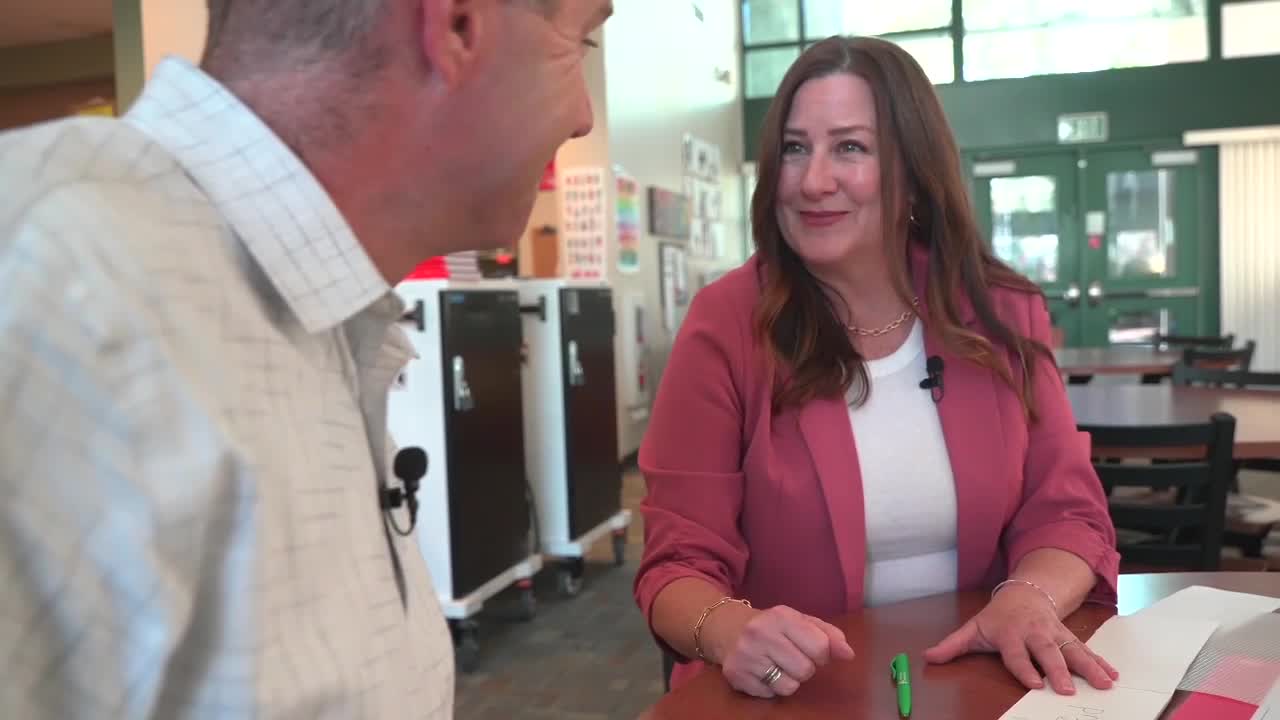Poway Unified School District students returned to class Wednesday with a reading program that's showing impressive results across all grade levels.
The district has implemented a multi-sensory approach to teaching reading that's dramatically improving literacy rates among its youngest students.
Trenace Sevilla, Poway Unified School District's special teacher on assignment, uses unconventional tools to teach reading - whiteboards, bumpy boards, cards, tiles, and even sand on trays instead of traditional books and papers.
"And I want you to say the sounds with me. C-A-T. Read it: Cat. Cat," Sevilla demonstrated during a lesson.
These materials are part of a reading comprehension program called IMSE, or Institute for Multi-Sensory Education, that Poway Unified began using in 2018.
"My eyes are working, my ears are working, my mouth is working, and something with my fine motor or gross motor is working," Sevilla said.
The program initially started in Poway's special education department, but Sevilla quickly recognized its potential benefits for all students.
In 2022, using leftover pandemic funding, Poway began training every teacher in the IMSE method.
"I'm so proud of Poway for leaning into the opportunity, and I'm proud of Poway teachers for taking that opportunity," Sevilla said.
The IMSE approach has been gaining popularity across schools. Last year, Monarch School, which serves students experiencing homelessness, implemented the program with remarkable results: 97% of their students who completed pre- and mid-year testing showed increased literacy scores.
"That just makes you really excited for the work that's happening in the classrooms and the joy of learning that kids are getting to experience," Dyane Plumly said.
At Poway Unified, the improvement over their first full year of IMSE has been equally impressive. According to district data, kindergarteners went from 43% performing below grade level in winter to 91% reading on or above grade level by year's end.
First graders improved from 59% below grade level in fall to 84% on or above grade level by the end of the year, while second graders jumped from 45% below to 85% on or above.
"It happens because teachers know exactly what to do," Sevilla said. "It was amazing. I looked it up, I looked at my peers, because I'm not the data queen. I teach reading, not math. And I was like, 'Wait, does this really mean what I think it means?' And people around me were like, 'Oh my gosh, yes! Let's get excited about this.'"
This fall, every student in the district will begin the year with a reading foundation in place from IMSE, making Sevilla enthusiastic about future possibilities.
"I cannot wait to see what happens moving forward as those students move into 3rd grade, 4th grade, 5th grade. That foundation they're bringing with them? Amazing," Sevilla said.
To help parents understand these new reading strategies, the district plans to offer literacy nights, though Sevilla notes that students will likely be able to teach their parents the methods as they progress.
This story was reported on-air by a journalist and has been converted to this platform with the assistance of AI. Our editorial team verifies all reporting on all platforms for fairness and accuracy.




